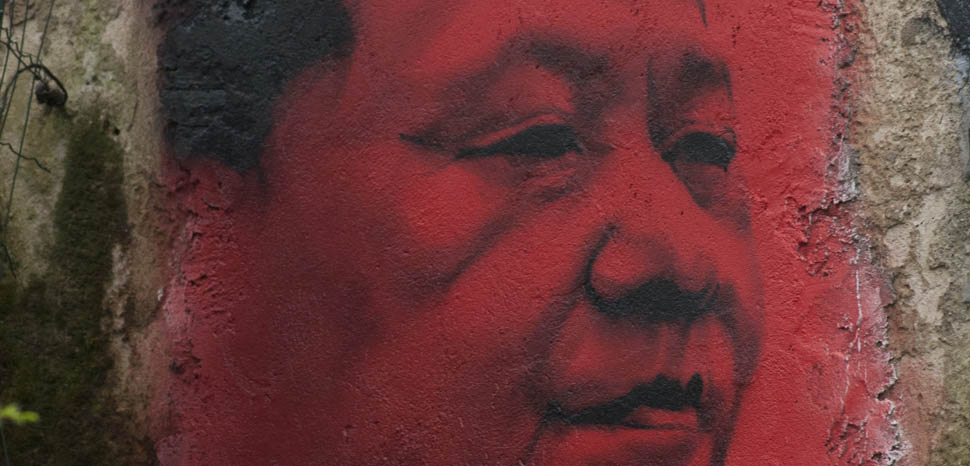At the end of 2017, Brahma Chellaney, a professor with the New Delhi-based Center for Policy Research, wrote an article titled “China’s Creditor Imperialism” in which he accused China of creating a “debt trap” from Argentina, to Namibia and Laos, mentioning its acquisition of, or investment in the construction of several port hubs, including Hambantota in Sri Lanka, Piraeus in Greece, Djibouti, and Mombasa in Kenya in recent years.
These countries are forced to avoid default by painfully choosing to let China control their resources and thus have forfeited their sovereignty, he wrote. The article described China as a “new imperial giant” with a velvet glove hiding iron fists with which it was pressing small countries. The Belt and Road Initiative, he concluded, is essentially an ambitious plan to realize “Chinese imperialism.” The article was later widely quoted by newspapers, websites and think tanks around the world.
When then United States Secretary of State Rex Tillerson visited Africa in March, he also said that although Chinese investment may help improve Africa’s infrastructure, it would lead to increased debt on the continent, without creating many jobs.
It is no accident that this idea of China’s creditor imperialism theory originates from India. New Delhi has openly opposed China’s Belt and Road Initiative, especially the China-Pakistan Economic Corridor as it runs through Pakistan-administered Kashmir, which India regards as an integral part of its territory. India is also worried that the construction of China’s Maritime Silk Road will challenge its dominance in South Asia and the Indian Ocean. Based on such a judgment, the Indian government has worked out its own regional cooperation initiatives, and taken moves, such as the declaration of cooperation with Vietnam in oil exploration in the South China Sea and its investment in the renovation of Chabahar port in Iran, as countermeasures against the Chinese initiative.
Since January, India, the United States, Japan and Australia have actively built a “quasi-alliance system” for a “free and open Indo-Pacific order” as an alternative to the Belt and Road Initiative. In April, a senior Indian official attending the fifth China-India Strategic Economic Dialogue reiterated the Indian government’s refusal to participate in the initiative.
The “creditor imperialism” fallacy is in essence a deliberate attempt by India and Western countries to denigrate the Belt and Road Initiative, which exhibits their envy of the initial fruits the initiative has produced. Such an argument stems from their own experiences of colonialism and imperialism. It is exactly the US-led Western countries that attached their political and strategic interests to the debt relationship with debtor countries and forced them to sign unequal treaties. China’s Belt and Road Initiative is proposed and implemented in the context of national equality, globalization and deepening international interdependence, and based on voluntary participation from relevant countries, which is totally different from the mandatory debt relationship of the West’s colonialism.
It is an important “Chinese experience” to use foreign debts to solve its transportation and energy bottlenecks that restrict its economic and social development at the time of its accelerated industrialization and urbanization. By making use of borrowed foreign debts, China once built thousands of large and medium-sized projects, greatly easing the transportation and energy “bottlenecks” that long restrained its social and economic development. Such an experience is of reference significance for other developing countries in their initial stage of industrialization and urbanization along the Belt and Road routes.
In the early stage of China’s reform and opening-up, US dollar-denominated foreign debt accounted for nearly 50 percent of China’s total foreign debts, and Japanese yen close to 30 percent. Why didn’t Western countries think the US and Japan were pushing their “creditor imperialism” on China?
Some foreign media have repeatedly mentioned that Sri Lanka is trapped in a “debt trap” due to its excessive money borrowing from China. But the fact is that there are multiple reasons for Sri Lanka’s heavy foreign debt and its debt predicament should not be attributed to China. For most of the years since 1985, foreign debt has remained above 70 percent of its GDP due to its continuous fiscal deficits caused by low tax revenues and massive welfare spending. As of 2017, Sri Lanka owed China $2.87 billion, accounting for only 10 percent of its total foreign debt, compared with $3.44 billion it owed to Japan, 12 percent of its total foreign debt. Japan has been Sri Lanka’s largest creditor since 2006, but why does no foreign media disseminate the idea of “Japan’s creditor imperialism”?
In response to the accusation that China is pursuing creditor imperialism made by India and some Western countries, even former Sri Lankan president Mahinda Rajapaksa wrote an article in July using data to refute it.
Most of the time, the overseas large-scale infrastructure construction projects related to the Belt and Road Initiative are the ones operated by the Chinese government and Chinese enterprises under the request of the governments of involved countries along the Belt and Road routes or the ones undertaken by Chinese enterprises through bidding.
It is expected that with the construction of large-scale infrastructure projects and industrial parks under the Chinese initiative, which will cause the host country’s self-development and debt repayment ability to constantly increase, the China’s creditor imperialism nonsense will collapse.
Dr. Lu Wei is an associate research fellow with the China’s National Development and Reform Commission’s Academy of Macroeconomics Studies.
The opinions, beliefs, and viewpoints expressed by the authors are theirs alone and don’t reflect the official position of Geopoliticalmonitor.com or any other institution.




